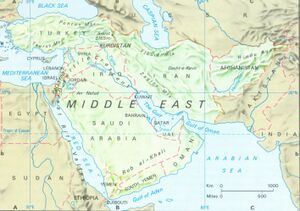Saudi Arabia
| Author: Laxman Burdak, IFS (R). |

Saudi Arabia is the largest Arab state in West Asia by land area ,the bulk of the Arabian Peninsula, and the second-largest in the Arab world (after Algeria).
Location
It is bordered by Jordan and Iraq to the north, Kuwait to the northeast, Qatar, Bahrain and the United Arab Emirates to the east, Oman to the southeast, and Yemen in the south. It is the only nation with both a Red Sea coast and a Persian Gulf coast.
Origin of name
Following the unification of the kingdoms of Hejaz and Nejd, the new state was named al-Mamlakah al-ʻArabīyah as-Suʻūdīyah (a transliteration of المملكة العربية السعودية in Arabic) by royal decree on 23 September 1932 by its founder, Abdulaziz Al Saud (Ibn Saud).
History
Apart from a small number of urban trading settlements, such as Mecca and Medina, located in the Hejaz in the west of the Arabian Peninsula, most of what was to become Saudi Arabia was populated by nomadic tribal societies in the inhospitable desert.[1] The Prophet of Islam, Muhammad, was born in Mecca in about 571. In the early 7th century, Muhammad united the various tribes of the peninsula and created a single Islamic religious polity. Following his death in 632, his followers rapidly expanded the territory under Muslim rule beyond Arabia, conquering huge swathes of territory (from the Iberian Peninsula in west to modern day Pakistan in east) in a matter of decades.
Jat History
External links
- National Unified Portal of the Kingdom of Saudi Arabia
- Official website of Embassy of India in Riyadh, Saudi Arabia
References
- ↑ Gordon, Matthew (2005). The Rise of Islam. p. 4. ISBN 0-313-32522-7.
References
Back to Jat Places in Foreign
